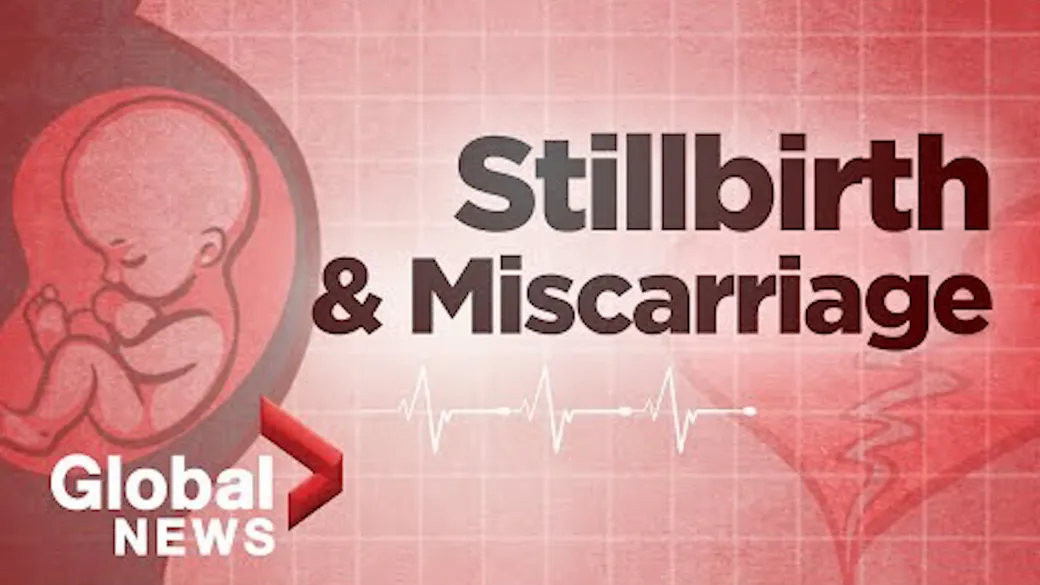

Up to 20 per cent of pregnancies end in miscarriage in Canada, forcing many to seek help in overcrowded emergency departments where they often face long wait times and a lack of compassionate support, a new report reveals.

The report, published Monday in the Canadian Medical Association Journal (CMAJ), argues that the absence of timely diagnosis and compassionate care for those experiencing miscarriages in the emergency room can result in significant and lasting psychological effects.
“This is a huge problem. One in four pregnancies ends up with a miscarriage, therefore, the care has to be better,” said co-author Dr. Modupe Tunde-Byass, an ob-gyn at North York General Hospital and associate professor at the University of Toronto.
“A perceived lack of compassion can lead to negative experiences and anxiety, depression, post-traumatic stress disorder … which can go on for months and even years after a miscarriage,” she told Global News.

Early pregnancy loss is defined as an empty gestational sac or a gestational sac with an embryo without fetal cardiac activity before 13 weeks gestation, the authors said. Common symptoms include bleeding, cramping, abdominal or pelvic pain, passage of tissue or a combination of these.
Tunde-Byass and her colleagues argue that not only are miscarriages common in Canada, but they are also poorly managed.
The CMAJ review aims to guide physicians on better diagnosing and managing the condition, advocating for referrals to outpatient early pregnancy assessment clinics (EPACs) and emphasizing the need for a more compassionate approach to care.
EPACs are pregnancy clinics that provide urgent and sensitive care to women who are less than 20 weeks pregnant and experiencing complications such as nausea, vomiting, vaginal bleeding, abdominal pain or cramping. These clinics provide an alternative to the emergency room, allowing patients to receive timely care without the need to wait in the ER.
Although EPACs already exist in Canada, Tunde-Byass argues that they are not universally available, and a patient needs a referral to be able to attend.
Many pregnant people experiencing bleeding and cramping seek care in emergency departments, the authors noted. However, for those without major symptoms, like a ruptured ectopic pregnancy or major uterine hemorrhage, this often means enduring long delays in overcrowded waiting rooms before seeing a doctor.
“What we hear from pregnant individuals is that the perception when they go to the ER and they don’t have a lot of symptoms, they perceive that the health-care provider believes they are wasting time and wasting resources,” Tunde-Byass said.
In an editorial accompanying the review, Dr. Catherine Varner, an emergency physician and deputy editor of the CMAJ, noted that while the emergency department is the safest and most appropriate place for a pregnant person with severe miscarriage symptoms, such as a ruptured ectopic pregnancy, those who are not critically ill often receive suboptimal care in these settings.
It’s not just the lack of compassion that pregnant individuals experience in emergency rooms, Varner said, it’s the long wait times that can also lead to risks and trauma.

In 2015, for example, a pregnant woman named Ashley Moisan, who was 10 weeks along, waited seven hours at a Fort Saskatchewan hospital seeking help after suffering a miscarriage.
After speaking with the nurses in the triage unit, she was informed that the wait would be about two hours and was told to take a seat in the waiting room. Unfortunately, she ended up waiting for seven hours before seeing a doctor.
Moisan acknowledged that it was a busy night at the hospital, but she said she wished they had been offered a more private place to wait. Moisan recounted having to go through the miscarriage in the waiting room, describing the experience as traumatic.
In 2022, Karindeep Mangat from Surrey, B.C., was nearly five months pregnant when she began experiencing complications and went to the hospital for help. She waited two hours to see a doctor for pain relief, only to be told she could go home shortly after.
Mangat miscarried shortly thereafter while alone in the hospital, as her husband had left the room to seek assistance. When she informed the staff that she had lost the baby, she was given the option to either take the fetus home or send it to the pathology lab for testing; she chose the latter.

Karindeep noted that while the nurses took the fetus, they didn’t bother to check on her health or look for complications. She also expressed frustration that her mental health was overlooked, as no counselling or support was offered.
“Patients who are early in pregnancy and they start having symptoms of early pregnancy loss often are not quite sure where to seek care. We know that patients in this age demographic are some of the most likely to not have a family physician, and so they often seek care in the emergency department,” Varner said.
“And we know that their care is suboptimal, they have bad experiences. They’re often not given clear discharge instructions, clear instructions of what’s happening. And so the the patients feel that and they feel a lot of guilt about having to rely on the emergency department and then layer on that the psychological distress of losing a pregnancy in this and having symptoms of early pregnancy loss. It’s really, really difficult.”
The authors recommend referring patients, when possible, to an outpatient EPAC, where health-care professionals are trained to provide comprehensive and compassionate care for those experiencing early pregnancy loss.
“Research from Ontario and British Columbia has shown that EPACs can ameliorate patient experience and have been shown to improve clinical outcomes, reduce repeat assessments in the emergency department, and lead to improved patient satisfaction,” Tunde-Byass wrote.
However, these services are lagging, the authors said, which is why many pregnant people seek help in emergency rooms.
Varner said she has spoken with patients who reported being told they didn’t qualify for psychological support or followup care after a miscarriage in the ER because their pregnancy loss happened too early.

“There’s a tremendous amount of compassion fatigue in emergency departments right now given the state of overcrowding. And I hope this will help us be more attentive to our language in the emergency department setting and the environment that the patients are feeling, especially in the waiting room … such as trying to make that extra effort to get a patient to a private space,” she said.
There is a need for more EPACs in Canada to ensure that patients receive compassionate care from trained professionals in pregnancy loss, without feeling rushed, the authors argue.
“We just need to expand them. And we also need to make them more available to patients in terms of extended hours. And I think importantly, to remove the need for a referral to an early pregnancy assessment clinic,” Varner said.
— with files from Global News’ Caley Gibson and Kylie Stanton


